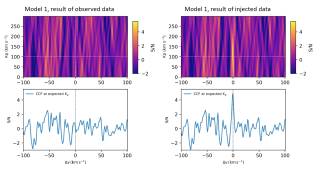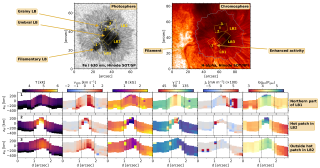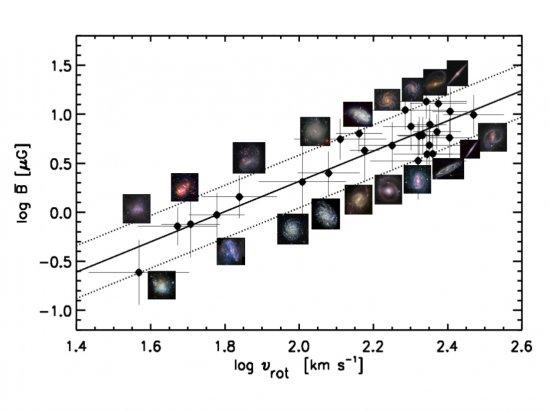Magnetic fields are present on all scales in the Universe from planets and stars to galaxies and galaxy clusters, and even at high redshifts. They are important for the continuation of life on the Earth, the onset of star formation, the order of the interstellar medium, and the evolution of galaxies. Hence, understanding the Universe without understanding magnetic fields is impossible. The origin and evolution of cosmic magnetic fields is among the most pressing questions in modern astronomy. The most widely accepted theory to explain the magnetic fields on stars and planets is the α-Ω dynamo theory. This describes the process through which a rotating, convecting, and electrically conducting fluid can maintain a magnetic field over astronomical timescales. On larger scales, a similar dynamo process could produce coherent magnetic fields in galaxies due to the combined action of helical turbulence and differential rotation, but observational evidence for the theory is so far very scarce. Putting together the available data of non-interacting, non-cluster galaxies with known large-scale magnetic fields, we find a tight correlation between the strength of the large-scale magnetic field and the rotation speed of galaxies. This correlation is linear assuming that the number of cosmic-ray electrons is proportional to the star formation rate, and super-linear assuming equipartition between magnetic fields and cosmic rays. This correlation cannot be attributed to an active linear α-Ω dynamo, as no correlation holds with global shear or angular speed. It indicates instead a coupling between the large-scale magnetic field and the dynamical mass of the galaxies. Hence, faster rotating and/or more massive galaxies have stronger large-scale magnetic fields. The observed correlation shows that the anisotropic turbulent magnetic field dominates the large-scale field in fast rotating galaxies as the turbulent magnetic field, coupled with gas, is enhanced and ordered due to the strong gas compression and/or local shear in these systems. This study supports a stationary condition for the large-scale magnetic field as long as the dynamical mass of galaxies is constant.
Advertised on
References
It may interest you
-
 The rocky planet GJ 1132 b, with Earth-like mass and radius, is a prime candidate for atmospheric studies. Previous observations with Hubble and JWST yielded conflicting results about its atmosphere. This study used three transit observations with the CRIRES+ instrument to search for He i, HCN, CH₄, and H₂O in GJ 1132 b's atmosphere. No clear atmospheric signals were detected, but upper limits for CH₄, HCN, and H₂O were established. The results suggest that if GJ 1132 b has an atmosphere, it is not dominated by hydrogen. The work highlights the challenges of detecting high molecular weightAdvertised on
The rocky planet GJ 1132 b, with Earth-like mass and radius, is a prime candidate for atmospheric studies. Previous observations with Hubble and JWST yielded conflicting results about its atmosphere. This study used three transit observations with the CRIRES+ instrument to search for He i, HCN, CH₄, and H₂O in GJ 1132 b's atmosphere. No clear atmospheric signals were detected, but upper limits for CH₄, HCN, and H₂O were established. The results suggest that if GJ 1132 b has an atmosphere, it is not dominated by hydrogen. The work highlights the challenges of detecting high molecular weightAdvertised on -
 Light bridges are elongated and bright structures protruding into the umbra of sunspots. The presence of light bridges has a significant role in the evolution of sunspots and the heating of their overlying atmosphere. Therefore, investigating these structures is crucial to understanding fundamental aspects of sunspots. By applying a novel code based on deep-learning algorithms called SICON to spectropolarimetric observations acquired with the Hinode satellite, we computed atmospheric parameters that allowed us to infer the variation of the physical properties of light bridges on a geometricAdvertised on
Light bridges are elongated and bright structures protruding into the umbra of sunspots. The presence of light bridges has a significant role in the evolution of sunspots and the heating of their overlying atmosphere. Therefore, investigating these structures is crucial to understanding fundamental aspects of sunspots. By applying a novel code based on deep-learning algorithms called SICON to spectropolarimetric observations acquired with the Hinode satellite, we computed atmospheric parameters that allowed us to infer the variation of the physical properties of light bridges on a geometricAdvertised on -
 The formation and evolution of the disk of our Galaxy, the Milky Way, remains an enigma in astronomy. In particular, the relationship between the thick disk and the thin disk —two key components of the Milky Way— is still unclear. Understanding the chemical and dynamical properties of the stars within these disks is crucial, especially in the parameter spaces where their characteristics overlap, such the metallicity regime around [Fe/H] ~ -0.7, which marks the metal-poor end of the thin disk, higher than that of the thick disk. This is often interpreted as an indication that the thin diskAdvertised on
The formation and evolution of the disk of our Galaxy, the Milky Way, remains an enigma in astronomy. In particular, the relationship between the thick disk and the thin disk —two key components of the Milky Way— is still unclear. Understanding the chemical and dynamical properties of the stars within these disks is crucial, especially in the parameter spaces where their characteristics overlap, such the metallicity regime around [Fe/H] ~ -0.7, which marks the metal-poor end of the thin disk, higher than that of the thick disk. This is often interpreted as an indication that the thin diskAdvertised on
